Eczema flare-up when eating eggs and shrimp
Tam Anh General Hospital in Ho Chi Minh City recently received a case of a baby girl named TMA (9 months old, from Long An ) who came for examination with red rashes, peeling, itching, and crying on her cheeks, neck, chest, and hands.
Even on the red patches on the baby’s cheeks appeared cracks, oozing yellow fluid – a sign of skin infection. The baby’s mother said that the baby had had this problem several times before. The family took the baby to a hospital, where he was diagnosed with dermatitis, and applying medicine helped him get better, but every 1-2 months the condition recurred once a month.
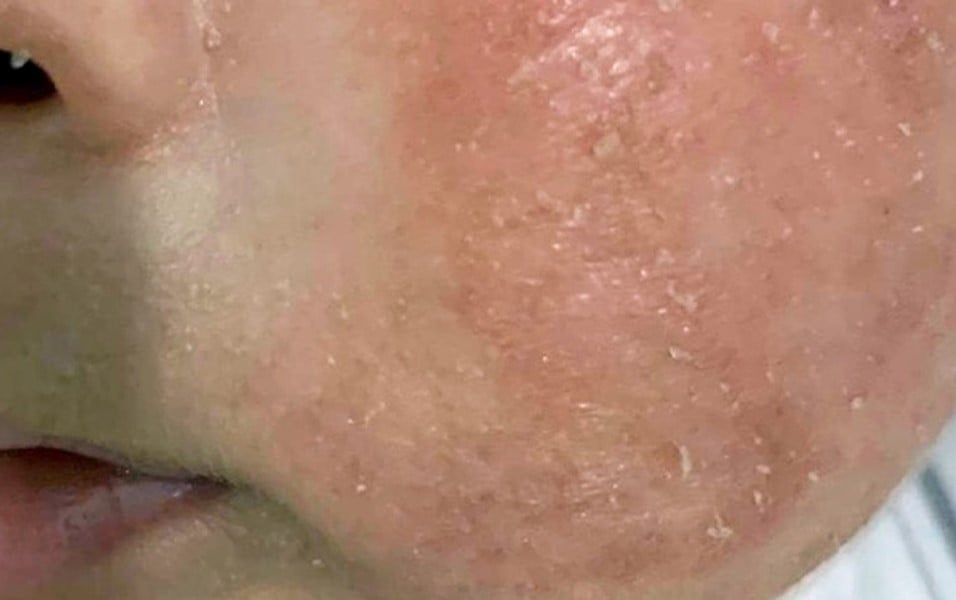
Child's atopic dermatitis condition before treatment. (Photo: Tam Anh General Hospital).
After examination, Dr. Quach Thi Bich Van, a dermatologist and cosmetic dermatologist, diagnosed the child with atopic dermatitis (infected with other bacteria and viruses). The patient was treated with oral antibiotics and topical medications, combined with applying moisturizer all over the body.
To prevent the disease from recurring, Dr. Van looked for the triggering factor in the child. After analyzing the information, the doctor realized that the child most likely inherited the disease from the mother. Ms. NTKL - the child's mother has dry skin and a history of atopic dermatitis.
In addition, after each time the baby eats baby food containing chicken, duck, shrimp, crab eggs or the mother eats and breastfeeds the baby, the baby gets sick again. From then on, the doctor ordered to stop adding these two foods to the baby's baby food and the mother also abstained until the baby stopped breastfeeding completely. At the same time, the baby was applied moisturizer daily, helping to regenerate the skin's protective barrier.
Genetic atopic dermatitis can cause serious complications
Atopic dermatitis or atopic eczema, milk eczema, milk ringworm is a common skin disease in all ages, most commonly found in children. The disease can progress chronically, there is no complete cure and it is easy to relapse. Every month, Tam Anh General Hospital in Ho Chi Minh City receives dozens of children for examination due to atopic dermatitis at various levels.
The typical signs of the disease are dry, slightly red, scaly, and itchy skin. In the acute stage, the skin appears blisters, oozes fluid, crusts, cracks, bleeds, and itches intensely. If infected, pustules will appear. The patient may have dermatitis all over the body, most commonly on the face, neck, extensor surfaces of the forearms, calves, and folds.
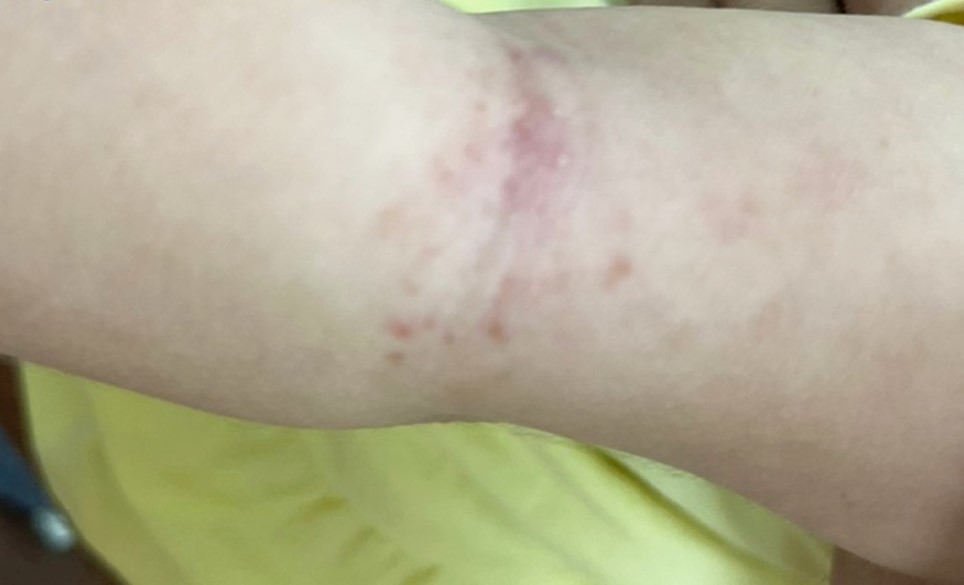
The forearms and legs are areas of skin susceptible to atopic dermatitis. (Photo: Tam Anh General Hospital).
The cause of atopic dermatitis stems from the complex interactions between genetic factors, environment, skin barrier function and immune response. If one parent has an allergic disease, the child is more likely to develop atopic dermatitis than other children; if both parents have the disease, the risk of the child developing atopic dermatitis increases even more.
In addition, the decline in skin barrier function and abnormal immune response that cannot protect the skin from external allergens are also the main factors causing the onset and recurrence of the disease. These factors include: frequently changing weather, cold, dry; air with lots of pollen, dust, animal hair; cosmetics such as soap, perfume; foods such as shrimp, crab, eggs, peanuts, etc.
In particular, in cases where a child has atopic dermatitis and is also attacked by staphylococcus aureus bacteria in the wound (secondary infection), the dermatitis will become more severe. This bacteria also triggers an allergic reaction that triggers eczema, like a vicious cycle.
“The immune barrier is immature and incomplete, the number of staphylococcus aureus bacteria increases on the skin, and the drugs that can be used for children are limited, making them susceptible to disease outbreaks and more severe than adults,” said Dr. Van.
If not detected early and treated properly and promptly, the disease will progress more severely, causing skin complications such as infection, fungal infection, skin thickening, hyperpigmentation, severe itching causing insomnia, decreased concentration, etc. Although they are not life-threatening, they greatly affect the patient's quality of life and psychology because of the impact on aesthetics and communication.
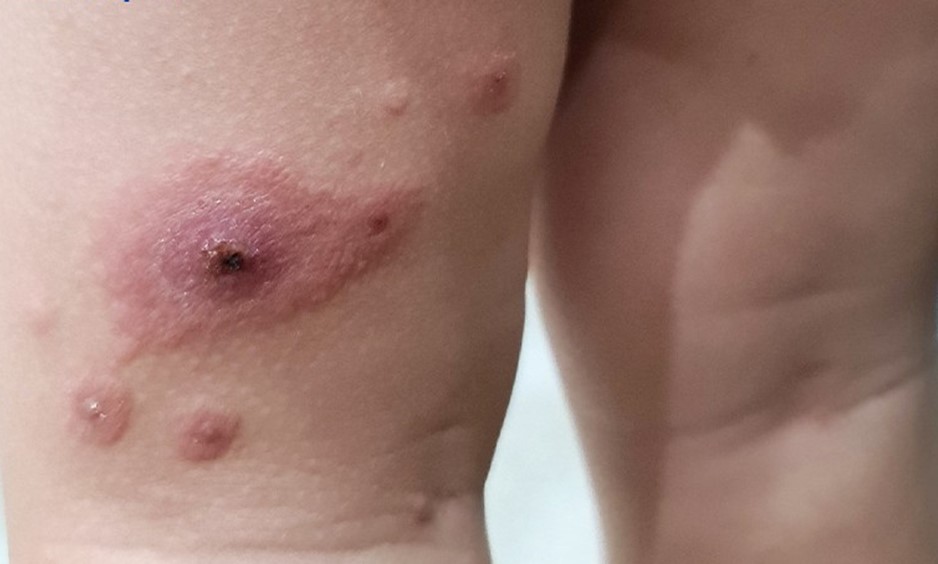
Large itchy rash, scratched a lot causing peeling in another case. (Photo: Tam Anh General Hospital).
According to Dr. Van, there is currently no medicine in the world that can completely cure atopic dermatitis. Treatment methods aim to control and prevent outbreaks and complications.
In addition to taking medication and avoiding allergens, patients are advised to actively protect their skin by regularly applying moisturizer. In addition, patients need to keep their bodies clean, especially after sweating a lot, limit hot baths; wear loose clothing; drink enough water every day and keep a comfortable spirit.
Doctors recommend that parents take their children with the above symptoms to hospitals with dermatology departments to reduce treatment time and costs. “If well controlled, the recurrence of atopic dermatitis is very rare, only about 1-2 times per year, or even less with milder symptoms,” said Dr. Van.
Le Trang
Source


![[Photo] General Secretary To Lam receives Singaporean Ambassador Jaya Ratnam](https://vphoto.vietnam.vn/thumb/1200x675/vietnam/resource/IMAGE/2025/11/03/1762171461424_a1-bnd-5309-9100-jpg.webp)


![[Photo] Lam Dong: Close-up of illegal lake with broken wall](https://vphoto.vietnam.vn/thumb/1200x675/vietnam/resource/IMAGE/2025/11/03/1762166057849_a5018a8dcbd5478b1ec4-jpg.webp)
![[Photo] Prime Minister Pham Minh Chinh receives the Chairman of the Japan-Vietnam Friendship Association in the Kansai region](https://vphoto.vietnam.vn/thumb/1200x675/vietnam/resource/IMAGE/2025/11/03/1762176259003_ndo_br_dsc-9224-jpg.webp)
![[Photo] Fall Fair 2025 and impressive records](https://vphoto.vietnam.vn/thumb/1200x675/vietnam/resource/IMAGE/2025/11/03/1762180761230_ndo_br_tk-hcmt-15-jpg.webp)
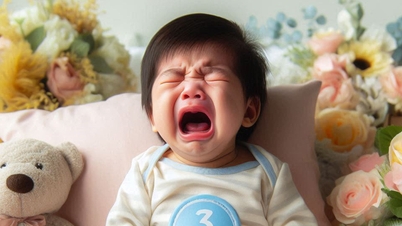






















































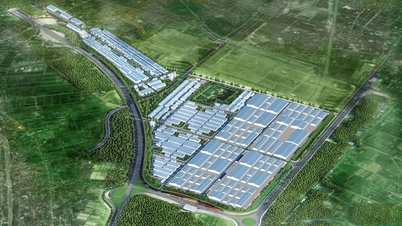












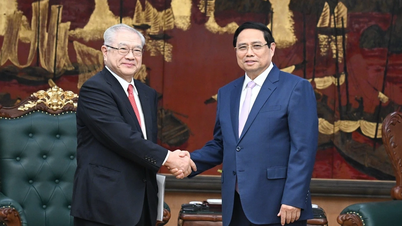







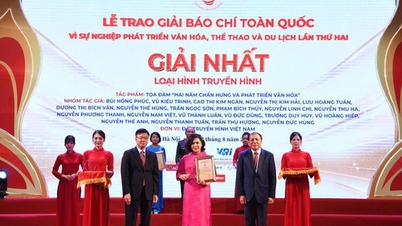




























Comment (0)